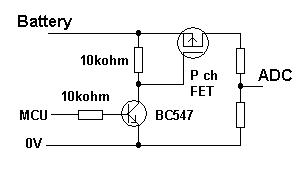Most microcontroller ADC inputs are not buffered. That means that the internal S/H capacitor must be charged directly by the input source.
From the datasheet you linked:-
The Analog Input Circuitry for single ended channels is illustrated in Figure 22-8. An analog
source applied to ADCn is subjected to the pin capacitance and input leakage of that pin, regardless
of whether that channel is selected as input for the ADC. When the channel is selected, the
source must drive the S/H capacitor through the series resistance (combined resistance in the
input path).
The ADC is optimized for analog signals with an output impedance of approximately 10 kΩ or
less. If such a source is used, the sampling time will be negligible. If a source with higher impedance
is used, the sampling time will depend on how long time the source needs to charge the
S/H capacitor, with can vary widely. The user is recommended to only use low impedant sources
with slowly varying signals, since this minimizes the required charge transfer to the S/H
capacitor.
If differential gain channels are used, the input circuitry looks somewhat different, although
source impedances of a few hundred kΩ or less is recommended.
Leakage, per se, is far from being constant, it will vary enormously from one unit to the next and will increase exponentially with temperature, but as I point out above, it's not your only problem.
Suggest you put a buffer amplifier in there or switch the divider as Andy suggested in order to reduce the impedance seen at the ADC input to 10K or less.
If you are powering the micro directly from the battery, a modification of Andy's suggestion would be to wire the lower resistor of the divider to an unused port pin rather than ground. Float the pin to turn the divider off, bring it low to turn the divider on. Then you could use a couple of 20.0K resistors for the divider and meet the 10K input spec. You can see from 28.1.8 that the pin will pull it pretty close to ground typically (not as good as a discrete MOSFET, but there you go).


